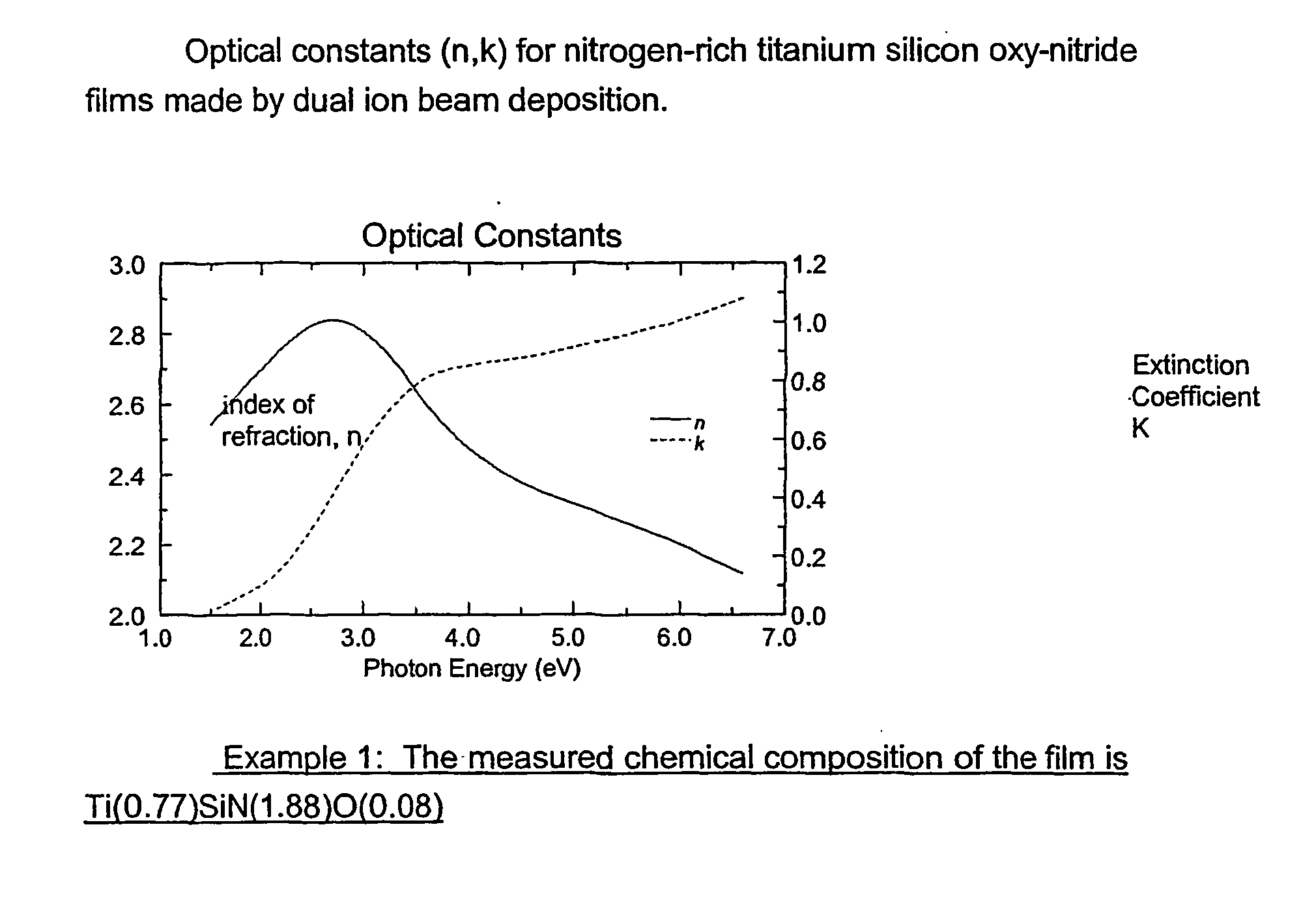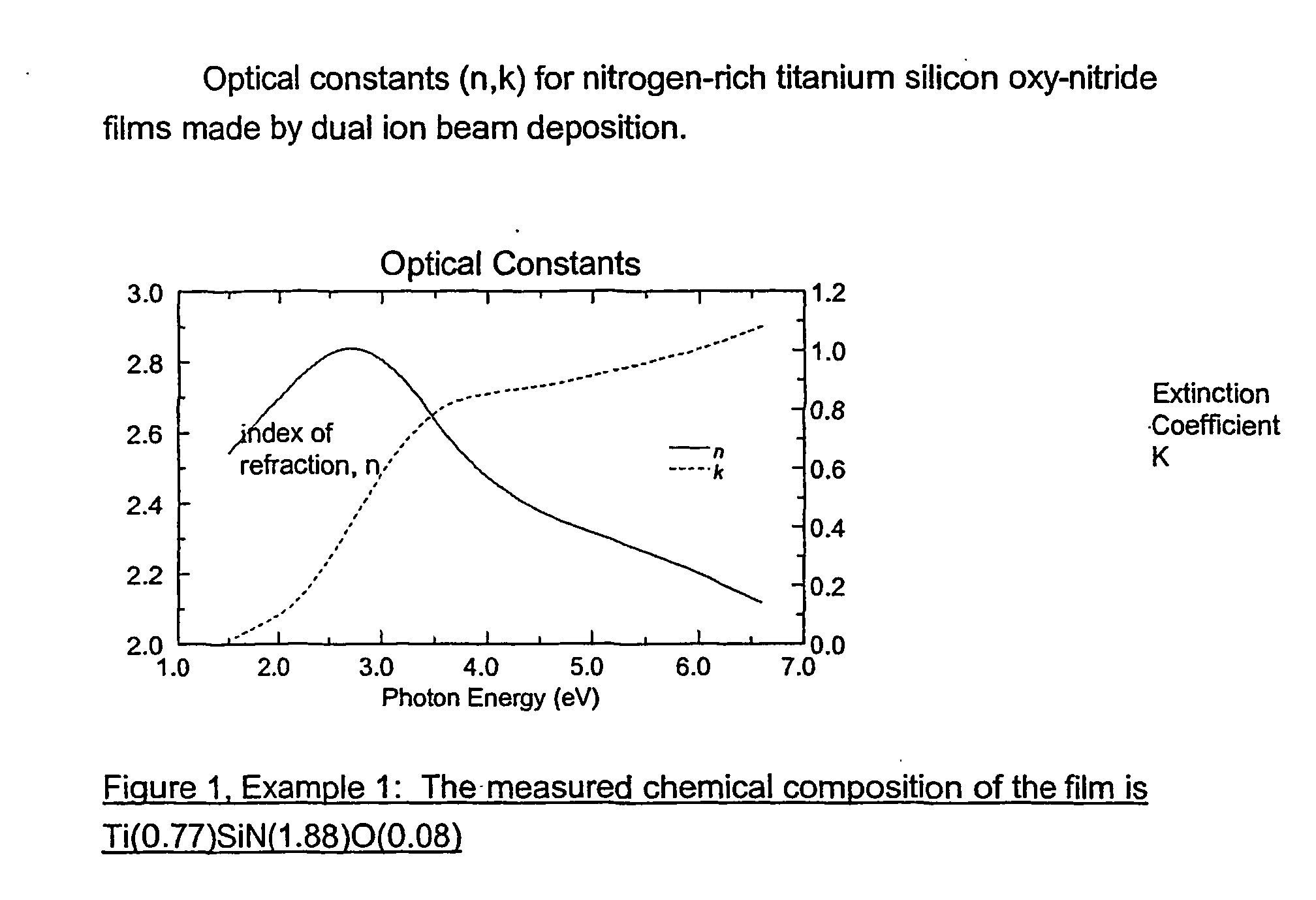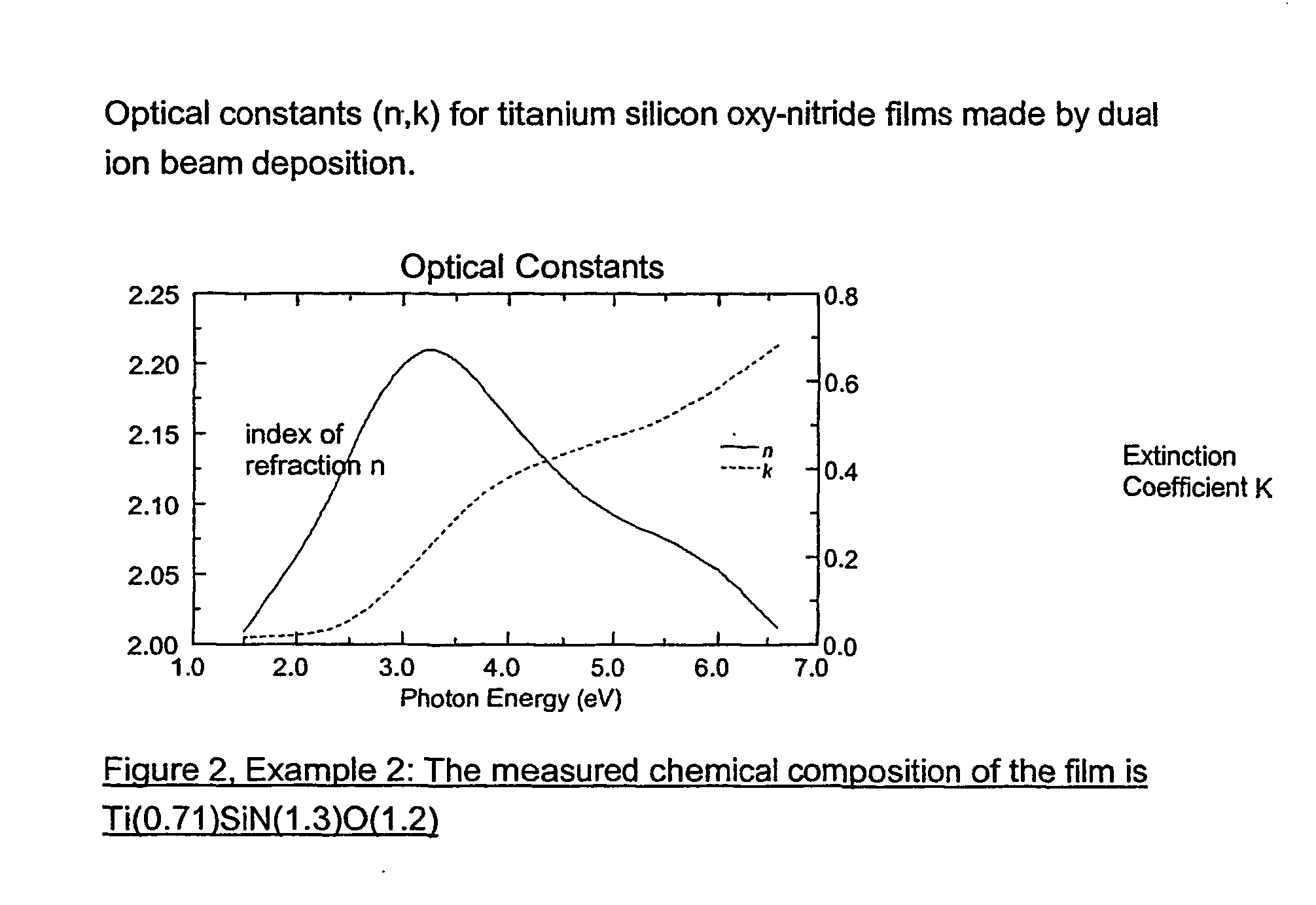Ion-beam deposition process for manufacturing attenuated phase shift photomask blanks
a phase shift photomask and phase shift technology, which is applied in the direction of photomechanical treatment originals, instruments, electrographic processes, etc., can solve the problems of etching or removal of film, inability to accurately control the process of sputtering plasma, and limited resolution for imaging the minimum feature size on the wafer with a particular wavelength of ligh
- Summary
- Abstract
- Description
- Claims
- Application Information
AI Technical Summary
Problems solved by technology
Method used
Image
Examples
example 1
[0056] Titanium silicon nitride films were made by dual ion beam deposition in a commercial tool (Commonwealth Scientific) from a TiSi.sub.2 target. Deposition from TiSi.sub.2 was carried out with one ion beam deposition source operating at a voltage of 1200 V and a beam current of 25 mA, simultaneously nitriding the growing film with N.sub.2 ions from a second assist ion beam source, operating at 70 V. 20.6 sccm of Ar were used in the deposition source, while N.sub.2 at 7 sccm were used in the assist source. The substrates were Si and quartz. Deposition for 90 minutes produced a film 1175 A thick with chemical composition of Ti(0.77)SiN(1.88)O(0.08), as determined from X-ray photoelectron spectroscopy. FIG. 1 shows the spectral dependence of optical constants, determined by spectroscopic ellipsometry.
example 2
[0057] Titanium silicon oxy-nitride films were made by dual ion beam deposition in a commercial tool (Commonwealth Scientific) from a TiSi.sub.2 target. Deposition from TiSi.sub.2 was carried out with one ion beam deposition source operating at a voltage of 1200 V and a beam current of 25 mA, while the growing film was bombarded by ions from a 10% O.sub.2 / 90% N.sub.2 gas mixture from a second assist ion beam source, operating at 70 V. 16.6 sccm of Ar were used in the deposition source, while the flow rate of the O.sub.2 / N.sub.2 mixture was 2.9 sccm in the assist source. The substrates were Si and quartz. Deposition for 61 minutes produced a film 840 A thick with chemical composition of Ti(0.71)SiN(1.3)0(1.2), as determined from X-ray photoelectron spectroscopy. FIG. 2 shows the spectral dependence of optical constants, determined by spectroscopic ellipsometry.
example 3
[0058] Titanium silicon oxide films were made by dual ion beam deposition in a commercial tool (Commonwealth Scientific) from a TiSi.sub.2 target. Deposition from TiSi.sub.2 was carried out with one ion beam deposition source operating at a voltage of 1200 V and a beam current of 25 mA, simultaneously oxidizing the growing film with oxygen ions from a second assist ion beam source, operating at 70 V. 16.6 sccm of Ar were used in the deposition source, while the flow rate of the O.sub.2 was 3 sccm in the assist source. The substrates were Si and quartz. Deposition for 58 minutes produced a film 208 A thick with chemical composition of Ti(0.57)SiO(3.1), as determined from X-ray photoelectron spectroscopy. FIG. 3 shows the spectral dependence of optical constants, determined by spectroscopic ellipsometry.
[0059] These three examples follow the trend in optical properties for below 400 nm or greater than 3.1 eV in energy that increasing the oxide content in titanium silicon oxy-nitride f...
PUM
| Property | Measurement | Unit |
|---|---|---|
| lithographic wavelengths | aaaaa | aaaaa |
| lithographic wavelength | aaaaa | aaaaa |
| lithographic wavelength | aaaaa | aaaaa |
Abstract
Description
Claims
Application Information
 Login to View More
Login to View More - R&D
- Intellectual Property
- Life Sciences
- Materials
- Tech Scout
- Unparalleled Data Quality
- Higher Quality Content
- 60% Fewer Hallucinations
Browse by: Latest US Patents, China's latest patents, Technical Efficacy Thesaurus, Application Domain, Technology Topic, Popular Technical Reports.
© 2025 PatSnap. All rights reserved.Legal|Privacy policy|Modern Slavery Act Transparency Statement|Sitemap|About US| Contact US: help@patsnap.com



